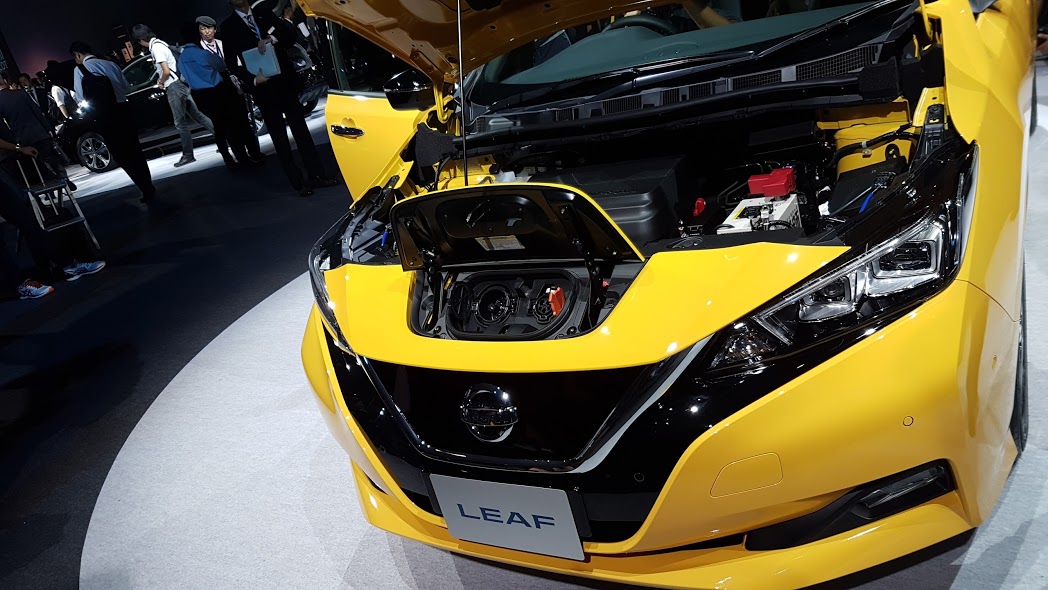Nissan Leaf 2: up close and personal with the Tesla Model 3 rival
New Nissan Leaf 2 offers greater range and updated design

Nissan has revealed the new all-electric Nissan Leaf 2 at an event in Tokyo, the newest Electric Vehicle (EV) that is set to compete head to head with the Tesla Model 3.
The new NIssan model offers extended range, improved technology across the board, as well as increased automation in order to fight off intensive competition in the EV space.
The Nissan Leaf 2 sees Nissan’s e-Pedal hit the streets. According to Nissan, this is a single pedal that allows the driver to accelerate and brake ‘seamlessly’. When the accelerator is fully released, regenerative and friction brakes are applied automatically, gradually bringing the car to a complete stop.
Electric dreams
When it's depressed, a complex control interface gives varying levels of acceleration based on current speed, available torque and traction. There is also a conventional brake pedal for ‘aggressive braking’ situations, luckily for drivers and regulators alike.
Due to go on sale in Europe from January 2018, the new EV brings 40% increased range, now 378 km/235miles on a single charge, which the company claims should last city users around a week based on average use.
The Li-Ion 40kw battery supports an all new e-powertrain now delivering a total power output of 110 kW, while torque has been increased to 320 Nm.

Pricing has not been confirmed for the UK, but given the Japanese price of 3,150,360 yen, it's likely to be around the £22,220 mark. An additional premium version, with increased motor power and battery capacity at a higher price will be available at the end of 2018.
Sign up for breaking news, reviews, opinion, top tech deals, and more.
In some countries, Apple CarPlay and Android Auto have been added to the infotainment system in cars equipped with the navigation system. Customers also get a newly designed interface on the new Nissan LEAF smartphone app which allows them to monitor their vehicle’s state of charge, find the nearest charging station and pre-heat or cool the car to the ideal temperature before driving.
Danielle Schillaci, executive vice president of zero emission vehicle and battery business, Nissan said: “We like to say that this is not an EV! There is massive potential in this market, and EV alone is not a broad enough strategy. Customers can now actively manage their energy footprint through the Leaf 2 – Nissan are not just dreamers, we are doers.”
The assistive technologies in the Leaf 2 broadly split out into two categories. The first is ProPILOT Park which is a combination of 4 cameras and 12 ultrasonic sensors that when activated take control of all steering, acceleration, braking and gear selection to automatically guide the car into a parking spot. The second is ProPILOT advanced driver assistance system for single-lane driving.

Hands-on demos of the ProPILOT Park revealed a fairly intuitive process, with the user selecting from a choice of ‘modes’ including parallel and reverse park, then driving up to a space.
The car detects available spaces, displaying them as options on the dash-integrated 7-in TFT screen, which the user can select.
To complete parking, the driver presses and holds a button in the central console; releasing it stops the car instantly. Technologies such as road sign recognition and lane assist finish off the driver assist offerings.
Nissan has made a big point of promoting its Vehicle-to-Grid (V2G) technology, which essentially allows two-way charging, both from the grid and back into it, so that owners can benefit from unpredictable renewable energy flows as well as peak and off peak pricing fluctuations.
There is potentially the opportunity to resell capacity to the grid at high demand times, although the consumer-facing part of this is still under development.
Parking made easy
Nissan is running pilot programs with utility providers in Denmark with ENEL, and also in Japan with TEPCO, which are both at the testing phase. A spokesman for Nissan said that while the opportunity for fleet owners and individual users to generate revenue from electricity resale is considerable – to the tune of hundreds of Euros per month per vehicle – V2G is still at an embryonic stage.
Regulatory hurdles exist in many countries, while EV volume also needs to ramp up before the services will be commercially viable. In the case of the Japan pilot, approximately 100,000 EVs will need to be signed up to the service to make it commercially viable from a utility provision point of view, according to the spokesman. To put that in context, the original Leaf has sold 300,000 vehicles worldwide to date.
Nick Thomas, EV Programme director, Nissan, said: “We’re still testing Vehicle-to-Grid (V2G) technology, especially in terms of frequency output. We’re trialing between six and 22kw outputs from the battery, in order to find the sweet spot. We believe this will be in the 10-15kw range, but we’re extremely keen that customers’ enjoyment of their cars is not in any way compromised by V2G technology, so it’s an area we are testing rigorously.”
Nissan also has its xStorage Home product, a recently launched in-home battery array intended to perform a similar function, as well as provide a charge point for a Leaf.
The launch follows a series of announcements across Europe and the UK that new petrol and diesel car sales will be banned within decades. The UK said in July that the petrol/diesel ban would come into force from 2040, with the aim of cutting air pollution, as well as cut carbon emissions by 80% by 2050 from 1990 levels.

Mark Mayne has been covering tech, gadgets and outdoor innovation for longer than he can remember. A keen climber, mountaineer and scuba diver, he is also a dedicated weather enthusiast and flapjack consumption expert.